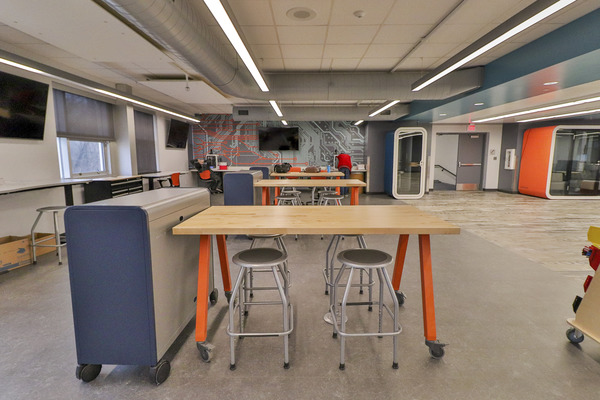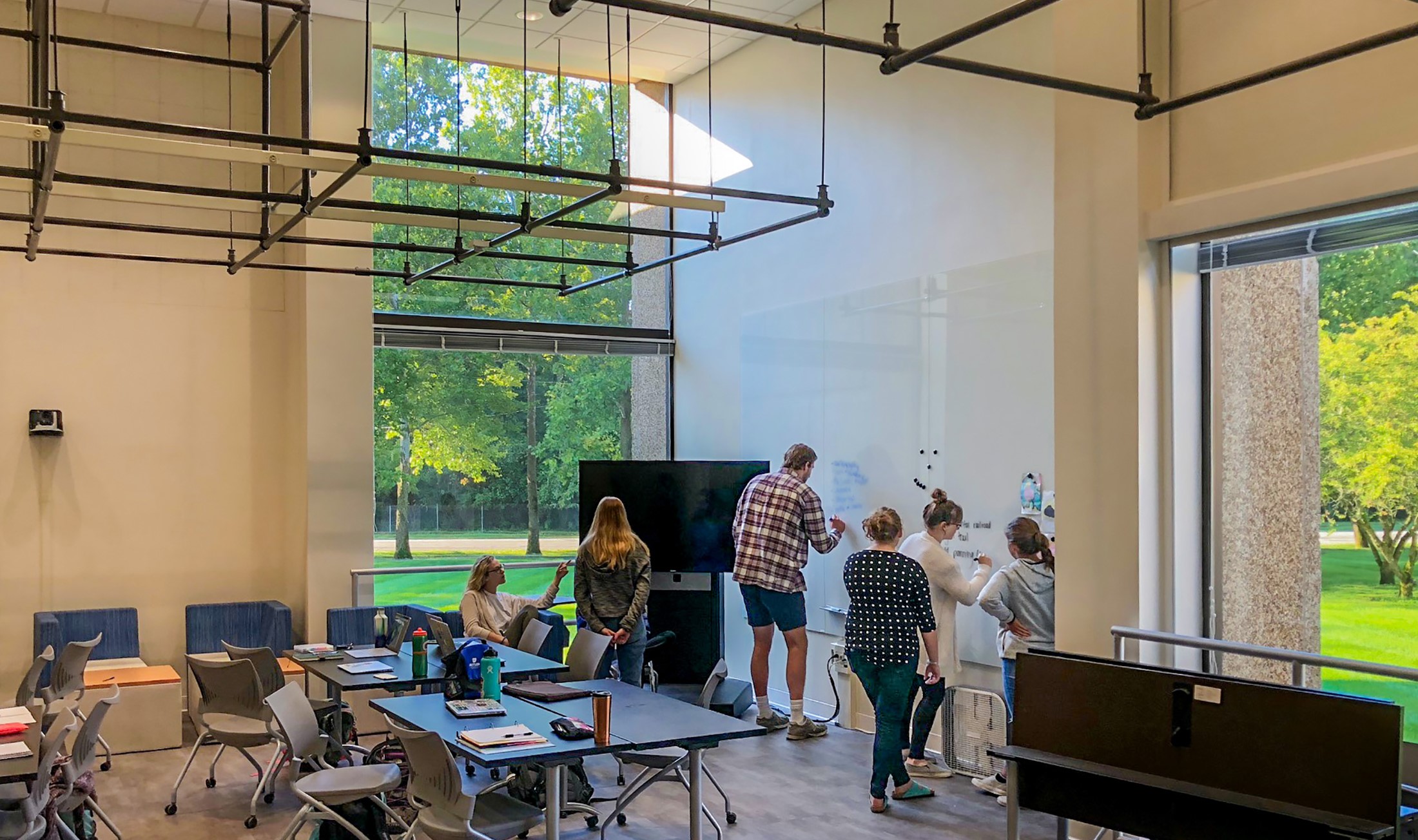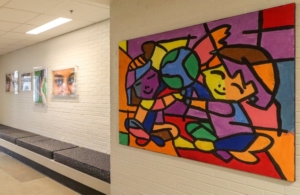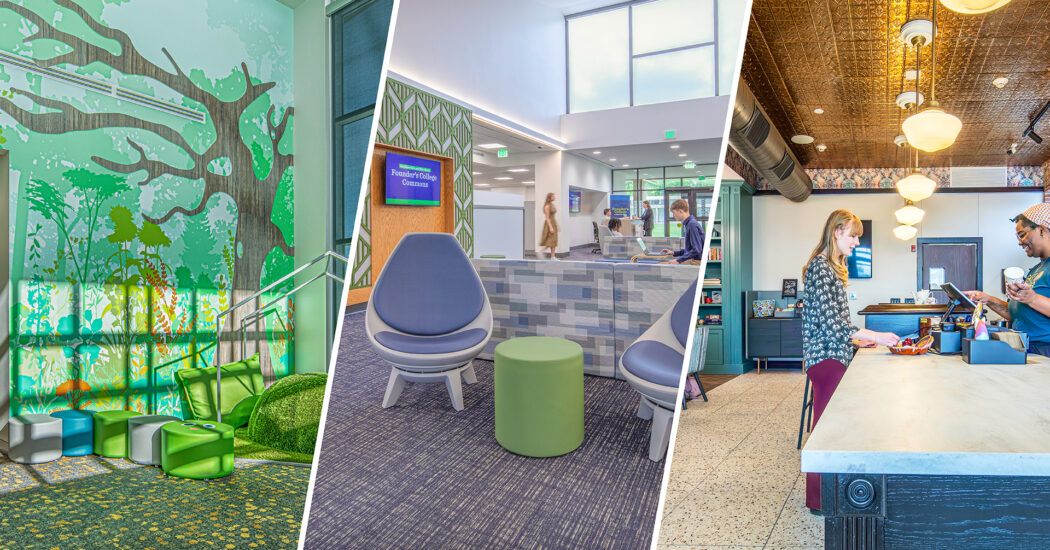Designing K-12 Education Spaces for Student Mental and Emotional Wellbeing | Part 1
-
Category
Studio-K12, Innovation -
Posted By
Anna Marie Burrell -
Posted On
Apr 14, 2021
Architectural and Interior Design Considerations

Education spaces tailored for young students | Golden Bear Preschool
The mental and emotional wellbeing of students has a significant impact on their development and ability to learn. The onset of COVID-19 has highlighted those needs and the critical nature of creating a healthy school environment in all aspects.
A 2020 Pulse Point survey of college presidents by the American Council on Education showed mental health of students (53%) and mental health of staff (42%) within the top three concerns due to COVID-19. This translates to the K-12 environment, particularly because these institutions are welcoming many of these students after graduation.
A variety of publications and books, such as The Power of Place by Winifred Gallagher, have documented the impact our surroundings have on our thoughts, emotions, and actions. The spaces we spend most of our time in create our sense of social interaction, community, and belonging. For children, school is one of the primary places they spend time, making it a key factor in their mental and emotional development.
A study by faculty at the University of Victoria Canada distilled seven design themes that impact the sense of place and wellbeing of building occupants:
- Freedom-Control
- Nature
- Materials
- Art
- Acoustics
- Light
- Air Quality & Thermal Comfort
As architects and engineers, we can apply these themes to education design, supporting the wellbeing of students through their physical environment.
In part one of this blog series, I’ll address the themes of freedom-control, nature, materials, and art. To learn about the themes of acoustics, light, and air quality/thermal comfort, see part two.
Freedom-Control
Giving students the ability to make decisions on how they interact with each other, and their environment provides a sense of both freedom and owning their own experience. This can improve engagement in their education and provide a sense of control at school when they may feel other parts of their lives are out of their control.
Flexible design and furniture selections help create this sense of freedom-control. A variety of types of spaces where students can both be social and work and interact in groups, as well as spaces where they can have quiet alone time, give them options to best support their emotional needs.

Innovation Lab Decatur Township | School of Excellence
The Decatur Township School of Excellence’s Innovation Lab, shown above, provides this type of flexibility for students. Single-person “phone booths” provide quiet space to be alone, while tables, stools, and carts on wheels allow for various collaborative configurations.
Nature
Today, humans spend more than 90 percent of our time indoors. This isolation from the natural world can have variety of mental and physical effects.
Biophilic design utilizes components of nature and natural forms in a space to reduce stress, increase cognitive performance, improve feeling, and positively affect emotion, mood, and preference. (Browning et al., 2014).
Biophilia has been shown to correlate with improved learning. Exposure to an abundance of natural daylight has been shown to enhance learning rates as much as 26%, according to a study by Heschong Mahone Group. Another study conducted at Green Street Academy in Baltimore showed test scores 3.3 times higher in classrooms that featured a connection to nature.

Classroom | Butler University College of Education
The Butler College of Education, shown above, was designed to align with modern K-12 teaching pedagogies so that educators-in-training could experience the principles they were being taught. The vast windows that bring in natural daylight and provide access to green views from outside are one of these aspects.
Materials & Art
Materials used in a space and the art throughout also have a significant impact on the sense of place for students.
Visual art has been shown to help reduce anxiety and agitation. Art is even used in healthcare settings to support physical, mental, and emotional health of patients.
Selecting patterns, textures, photos, and artwork that children can relate to or make them comfortable helps foster a sense of belonging and ownership in the space.

Mary Castle Elementary | MSD Lawrence Township
For example, at Mary Castle Elementary, MSD Lawrence Township, shown above, global, multi-cultural artwork is featured to develop socially aware, diverse students.
Giving proper attention to these design themes can have a significant impact on how students (and staff) feel and perform in a school environment. Whether you are renovating your school, building new, or even looking for some smaller upgrades you can make, consider these principles.
Read the second part of this series, focused on engineering and building system aspects of school facilities that impact mental and emotional wellbeing.







